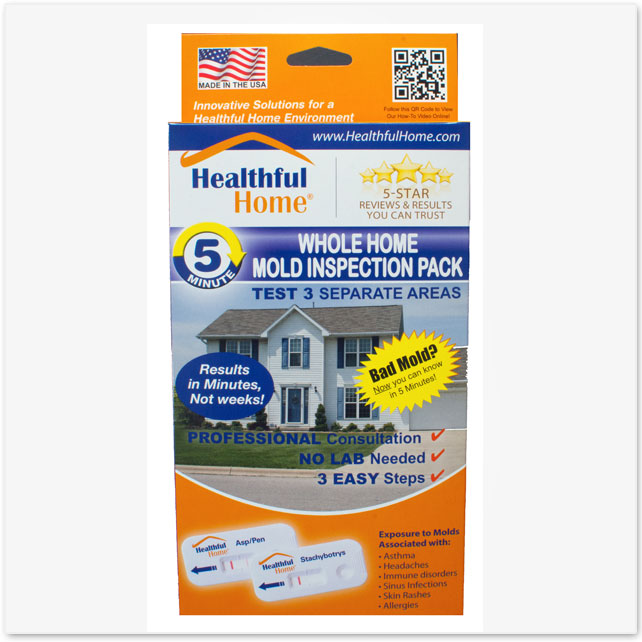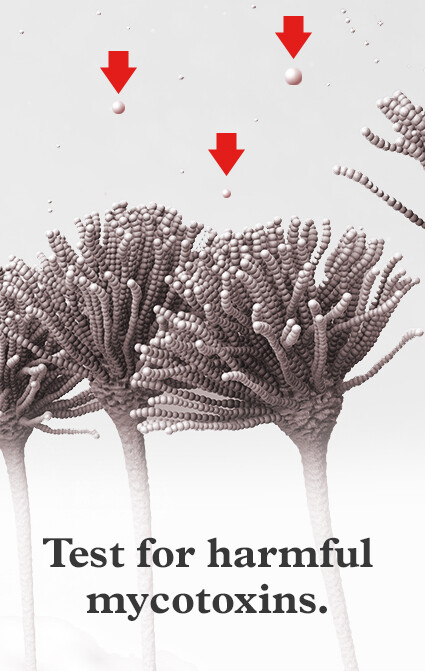Ensuring Conformity With Regulations: the Role of Mycotoxin Examining in Quality Control
Making sure conformity with rigid regulations is paramount for preserving food safety, and the duty of mycotoxin testing in quality assurance can not be overstated. Mycotoxins, harmful compounds generated by certain molds, pose substantial health and wellness risks, making their discovery vital in food manufacturing. Adherence to governing requirements, such as those set by the FDA and EU, calls for durable testing techniques and modern technologies to determine and quantify these impurities. By carrying out detailed screening protocols, firms can stop possible health dilemmas, stay clear of pricey recalls, and keep consumer depend on. The intricacies of these screening procedures raise important concerns about their performance and performance.
Comprehending Mycotoxins
Comprehending mycotoxins is basic to making sure the high quality and safety of agricultural products. The most infamous mycotoxins include aflatoxins, fumonisins, trichothecenes, and ochratoxins, each connected with particular environmental conditions and fungal types.
The visibility of mycotoxins in food products can lead to acute and chronic health and wellness concerns, consisting of liver damage, immune suppression, and cancer causing results. By understanding the sources, types, and effects of mycotoxins, stakeholders in the agricultural industry can better execute preventative measures and minimize threats, making certain much safer consumption for end-users.
Governing Requirements for Mycotoxins
Having developed a fundamental understanding of mycotoxins and their influence on food safety, it is important to examine the governing criteria controling their visibility in farming items. Governing criteria for mycotoxins are essential since they specify permitted restrictions, ensuring food security and securing public wellness. Numerous global and national agencies have actually established these restrictions based upon comprehensive risk evaluations.
The Codex Alimentarius Compensation, a global body established by the FAO and WHO, provides guidelines and maximum allowed degrees for various mycotoxins in food and feed. For example, the Codex has actually established limitations for aflatoxins in peanuts, maize, and dried figs, to name a few commodities. These criteria are typically adopted or adapted by individual countries to fit their particular needs.
In the European Union, Law (EC) No 1881/2006 states maximum levels for numerous mycotoxins, such as aflatoxins, ochratoxin A, and deoxynivalenol, in different food. The U.S. Food and Medicine Management (FDA) has actually established action degrees for mycotoxins like aflatoxins in commodities such as grains and nuts.
Adherence to these regulatory requirements is important for preserving market access, customer trust fund, and public health. Non-compliance can bring about substantial financial losses and health threats, underscoring the significance of stringent mycotoxin screening procedures.
Checking Methods and Technologies

ELISA is commonly appreciated for its cost-effective and fast testing abilities, making it suitable for high-throughput settings. It counts on antibodies to discover specific mycotoxins, giving cause a fairly brief time structure. Nevertheless, its sensitivity may be limited contrasted to extra sophisticated strategies.
HPLC, on the other hand, succeeds in offering measurable evaluation with high accuracy and precision. It separates intricate mixtures into individual components, making it very reliable for recognizing and evaluating multiple mycotoxins at the same time - Mycotoxin testing Services. This strategy, while much more resource-intensive and lengthy than ELISA, supplies a higher degree of integrity

LC-MS represents the peak of analytical uniqueness and level of sensitivity. Incorporating the splitting up power of fluid chromatography with the discovery capabilities of mass spectrometry, LC-MS can find also trace levels of mycotoxins. This technique is vital for verifying the presence of mycotoxins in regulatory and forensic contexts, guaranteeing conformity with stringent safety standards.
Implementing Evaluating Procedures

Incorporating these sophisticated testing techniques right into a detailed quality control structure requires a well-structured method to implementing screening protocols. To accomplish this, companies must first perform a detailed danger assessment to recognize prospective mycotoxin contamination points within the supply chain. This analysis informs the growth of a tailored testing technique that resolves specific vulnerabilities.
Following, developing standardized sampling procedures is important. Regular sampling makes sure that examination results are reliable and agent of the whole set (Mycotoxin testing Services). Adhering to standards from regulative bodies, such as that site the FDA or EFSA, helps preserve compliance and enhances the trustworthiness of the testing process
Training employees is an additional essential element. Staff must be competent in both example collection and the procedure of screening equipment. Routine training sessions and qualification programs can guarantee that staff member stay updated with the current techniques and governing adjustments.
Benefits of Mycotoxin Checking
Mycotoxin screening offers many benefits that significantly improve the safety and security and quality of food and feed products. Mostly, it serves as an essential control procedure to stop infected products from reaching the customer market, therefore securing public health. By identifying and quantifying mycotoxins such as aflatoxins, ochratoxins, and fumonisins, producers can guarantee that their items satisfy rigid governing criteria, hence preventing potential legal effects and connected prices.
Additionally, mycotoxin screening adds to the economic practicality of food and feed industries by decreasing the risk of large-scale product remembers. The capacity to separate and find infected batches early in the manufacturing procedure lowers waste and prevents the monetary losses have a peek at these guys related to broken brand name online reputation. It cultivates customer trust and commitment, as consumers are significantly conscious of food safety concerns and demand higher quality criteria.
The application of normal mycotoxin testing also advertises best techniques within agricultural and production markets. By adhering to rigorous screening procedures, firms can enhance their quality assurance processes, enhance functional efficiency, and ensure the constant production of secure, high-grade items. In conclusion, the advantages of mycotoxin testing are multifaceted, adding to public health, economic security, and sector stability.
Conclusion
Mycotoxin testing is vital in making sure compliance with governing standards, therefore maintaining food security and quality assurance. By systematically identifying dangerous mycotoxins, this method helps reduce wellness dangers, prevent legal consequences, and avoid economic losses connected with item recalls. Executing durable testing protocols fosters important link customer trust and self-confidence in food safety techniques, eventually supporting the stability and reputation of food services. Hence, mycotoxin screening remains an important component of modern food security administration systems.
Making certain conformity with rigorous regulations is paramount for maintaining food safety, and the function of mycotoxin testing in quality control can not be overstated.In the realm of mycotoxin testing, progressed approaches and innovations are pivotal in guaranteeing food safety and governing conformity.Mycotoxin testing offers numerous advantages that considerably boost the safety and top quality of food and feed products.Mycotoxin screening is essential in making certain compliance with governing criteria, consequently keeping food security and top quality control. Thus, mycotoxin screening continues to be a vital element of modern food safety monitoring systems.